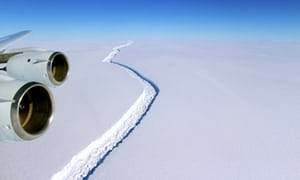currentsinbiology:Scientists hope damage to Larsen C ice shelf will reveal ecosystems A team of scie
currentsinbiology:Scientists hope damage to Larsen C ice shelf will reveal ecosystems A team of scientists is planning an expedition to examine the marine ecosystem revealed when an enormous iceberg broke off the Larsen C ice shelf earlier this year.In July, the iceberg known as A68 broke off the shelf, leaving the area at its lowest recorded extent. Researchers are now hoping the event may lead to novel revelations from their investigations of the area opened up, which had been hidden under ice for up to 120,000 years.Scientists from the British Antarctic Survey (BAS) will embark on the research ship RRS James Clark Ross in February 2018 to take the first look at the newly exposed ecosystems under the ice – if the conditions work in their favour.“You can never predict the ice,” said mission leader Dr Katrin Linse. “There are still several hundred kilometres covered in sea ice which has to move and melt. Fortunately this often happens now during the Antarctic summer, so that is why we are hopeful for February.”If everything works out, the scientists will have the chance to look at 5,800 sq km of sea floor that had been shielded for tens of thousands of years. Planning for such expeditions normally takes several years, but urgent funding schemes are available during such unpredictable natural events, like the volcanic activity over Iceland in 2010.The crack in the Larsen C ice shelf. Researchers will look at the newly exposed ecosystems under the ice next year, if conditions allow Photograph: IceBridge/NASA -- source link
